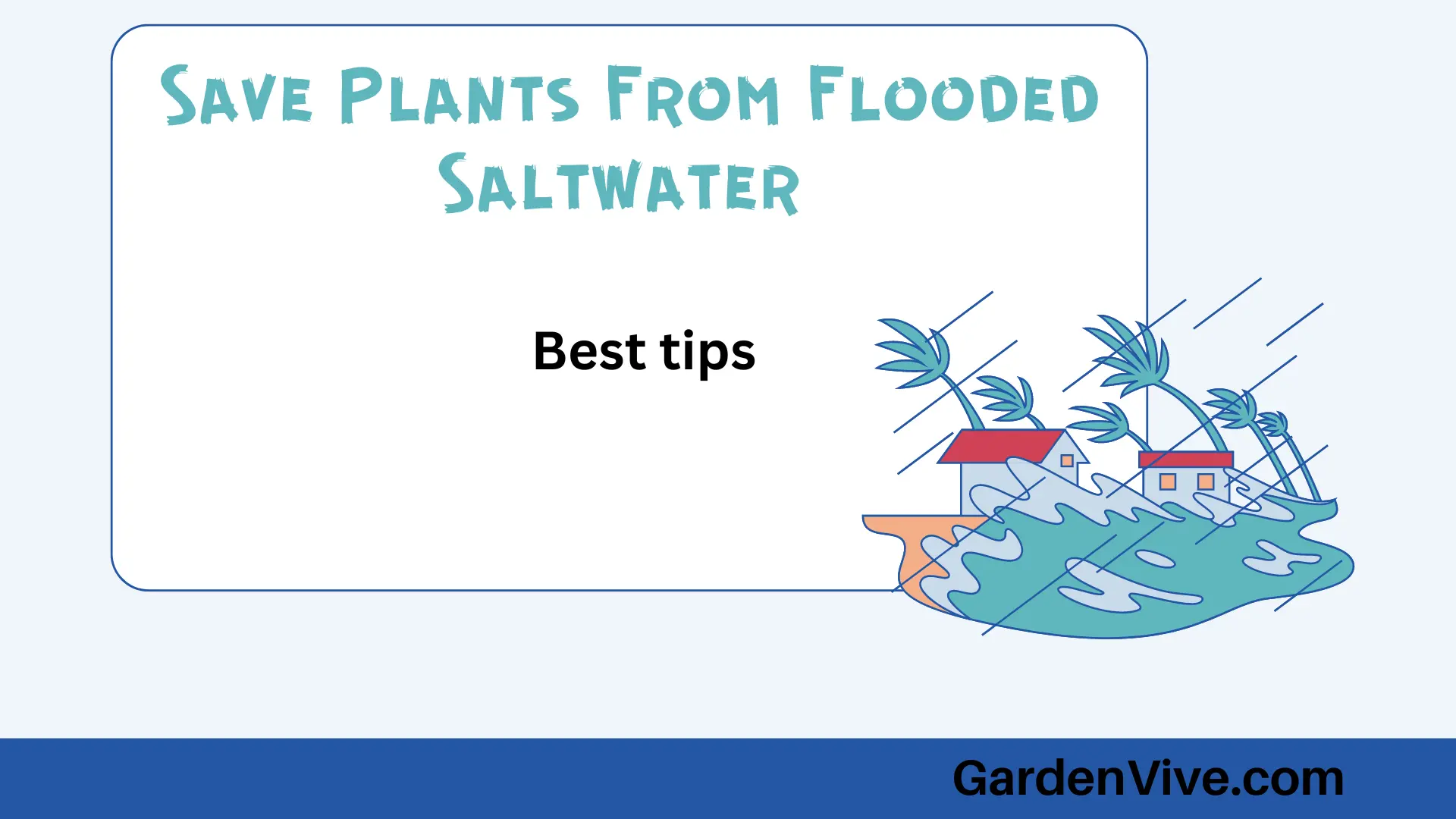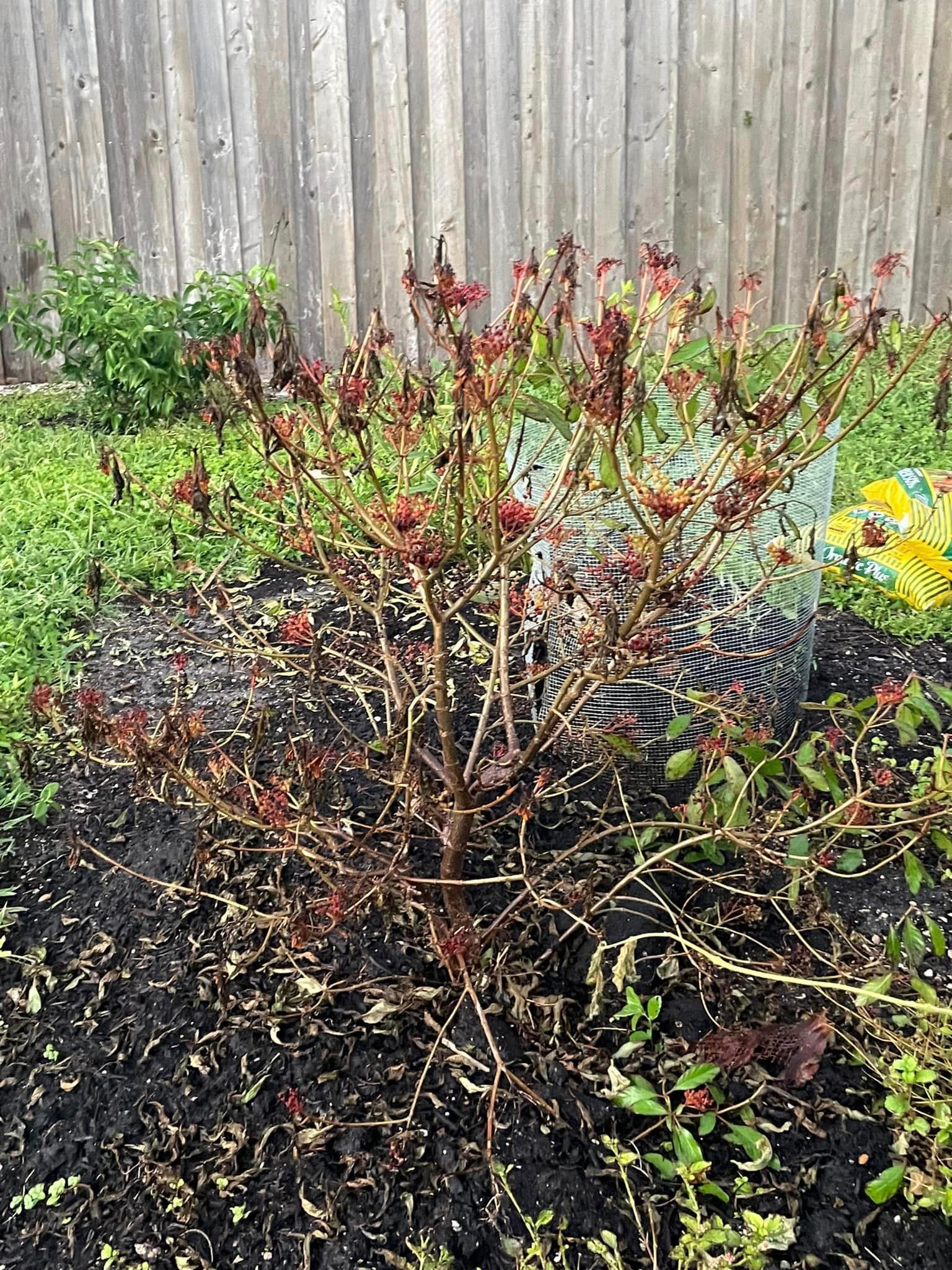
My father is a gardener in coastal areas, and after most hurricanes, his plants suffer from saltwater flooding. As he has been growing veggies, flowering plants, and trees since childhood, he has managed to save his plants flooded by saltwater. In this article, I will give you the best tips for recovering or saving your plants flooded by saltwater after storm surges.
If you are reading my articles on a regular basis, you must know that in my last article, I shared how to protect your plants from Hurricanes based on my experiences. But mother nature is unpredictable sometimes. Even after applying the best protection methods, you can lose your hard-earned plants or they can suffer from hurricane shock.
You can take a look at this list: Florida Native Shrubs and Trees that can withstand heavy storms
I will start with the basic and well-known methods first and then I will share what else you can do to save your plants from saltwater flooding.
Rinse the Soil and Leaves Thoroughly to dilute and remove the salts
As soon as the floodwaters recede, act as fast as you can. The salt left on the soil surface and the plant leaves is really harmful to your plants. (Some native plants can tolerate at a certain level)
Rinse the affected plants and the soil with fresh clean water. Your goal is to dilute the salt in the soil and remove the salt from the leaves of your plants. A consistent spray will wash the salt off the leaves. If you apply plenty of water in the soil, the salt will dilute and it will go deeper in the ground (where your plant roots can't reach).
Do not rinse the wind burned leaves. You can check: how to recover your plants from post hurricane wind burn
Note: If you have a large garden, it's obvious that you can't take action in a short time. So here you need to take priority on the small and sensitive plants. Some shrubs and plants have delicate root systems and they can be affected earlier.
List of plants that are more sensitive to saltwater
| Plant Name | Type | Reason for Sensitivity | Recommended Action |
|---|---|---|---|
| Roses | Flowering Shrub | Delicate root system, salt burn on leaves | Rinse leaves and roots thoroughly, provide nutrient-rich compost |
| Azaleas | Flowering Shrub | Low salt tolerance, root damage | Flush soil with freshwater, add organic matter |
| Blueberries | Fruit Bush | Salt interferes with nutrient uptake | Rinse leaves, improve soil drainage, use balanced fertilizer |
| Maple Trees | Deciduous Tree | Susceptible to salt toxicity in the root zone | Leach soil with freshwater, monitor for leaf scorch |
| Japanese Maple | Ornamental Tree | Highly sensitive to salt buildup | Flush soil regularly, prune damaged branches |
| Hydrangeas | Flowering Shrub | Roots are sensitive to saline soil | Rinse thoroughly, add organic mulch for moisture retention |
| Camellias | Flowering Shrub | Salt inhibits proper growth | Rinse and leach soil, monitor for yellowing leaves |

Add Organic Matter to Improve Soil Health
I always prefer organic stuff over chemical. Saltwater can deplete the soil with essential nutrients. You should try to restore the soil health without wasting any time. If you have applied fertilizer recently then you can skip this step. (As over-fertilization is worse for any plant)
Do not go for chemical fertilizer just after the saltwater flood. The plants are weaker at this point and they can't tolerate the heavy fertilization. Wait for new growths first.
Add organic matter like compost or well-rotted manure to the soil. My father uses fish and buries them under the ground. Believe me, it works amazing.
Some organic materials act like sponges and they retain moisture and dilute the salt in the soil as well.
Tip: Organic matter helps the soil microbes and it can break down salt and reduce its impact on the plants. You can also mulch with materials like straw, shredded leaves, or wood chips.
There are some more advanced ways to help your plants but I will recommend testing your soil first. You can buy any soil salt content (salinity) tester and use it at home or you can send the soil sample to your nearest agricultural extension service.
If you see slightly elevated salt levels in your soil then apply only the above-mentioned methods. But if you notice heavily salinized soils in your garden, try gypsum or leaching salts out through drip irrigation.
Prune Dead or Damaged Foliage
You can witness leaf burns, leaf discoloration, and damaged foliage at this time and this is quite normal due to the effect of saltwater. You can consider pruning the dead or damaged parts of your plants so that your plant can use its whole energy for new healthy growths.
Note: Do not prune too aggressively. Some plants can take more time to assess the full extent of the damage. If you prune aggressively, it will put stress on your plants which is not good at all.
How much time it may take to recover your plants from saltwater damage?
It can take time. So monitor your plant's health. If you see new growth or leaf color improvement then you can consider the plants are recovering. But if you do not see any improvement after a few weeks, it's time to move on by replacing it with salt-tolerant plant varieties. (If you think that saltwater flooding is natural in your area and it can happen again)
Good luck with your plants!
If you need any help in gardening feel free to subscribe to this site and send your questions via the contact page.



